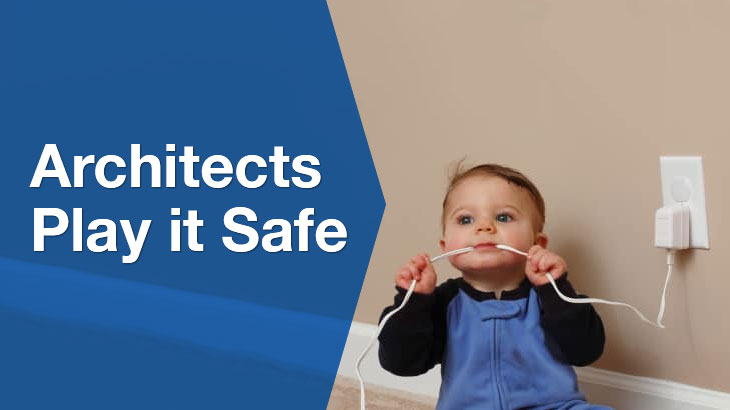Architects play it safe
When it comes to child safety, trial and error is not an option – which is why architects need to get it right the first time.

When it comes to child safety, trial and error is not an option – which is why architects need to get it right the first time.
Apart from the compulsory rules regarding safe-proofing homes, which must be adhered to in the Building Code of Australia (BCA), there are some additional safe-proofing precautions that should be taken when designing a home.
Our comprehensive home safety checklist includes all the elements that architects should give careful attention to:
- Assess the risks of staircases and landings. Consider installing handrails and balustrades or non-slip treads on polished staircases.
- Position living areas and kitchens to overlook the indoor and outdoor play areas so you keep an eye on children.
- Make sure hazardous electrical fixtures (e.g. power points) are installed out of the reach of kids and away from water. As an extra precaution, put plug-in covers over powerpoint when not in use.
- Avoid blind cords that have strangled children, or make sure you use an effective device to restrain them.
- Try to keep door handles away from floor level; this will prevent little fingers from being jammed in doors. For obvious reasons, you should also have at least one child-proof cabinet located high up for the storage of medicines and poisons.
- Where possible, opt for rounded corners over pointy ones (e.g. benchtops) to avoid poked eyes and bumped heads.
- Consider materials carefully. Opt for floorboards instead of carpets to reduce the potential for asthma and allergy attacks. Choose non-slip surfaces (especially in the bathroom) or install grab rails and reduce slipping with rubber grips.
- Ensure all heaters should be fitted with guards.
ServiceSeeking is your BEST VALUE option for connecting with new customers and growing your business.
To start receiving new leads, tell us which is your preferred email address…